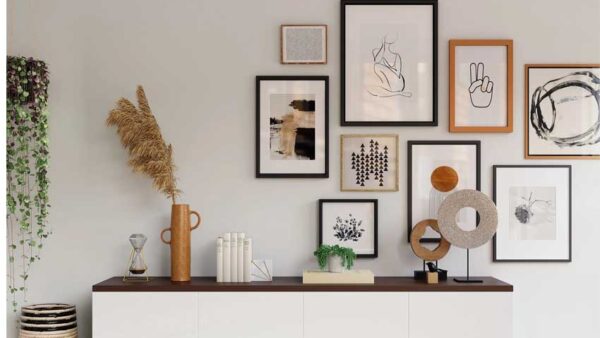Transforming Your Space with Elegant Home Decor
Transforming Your Space with Elegant Home Decor
Introduction
Home decor is more than just a way to make your living space look beautiful; it’s an expression of your personality, style, and preferences. The right decor can transform a mundane room into a vibrant, welcoming space that reflects who you are. Whether you’re moving into a new home or simply want to refresh your current space, understanding the principles of home decor can help you create an environment that is both functional and aesthetically pleasing.
The Importance of Color
Color is one of the most crucial elements of home decor. It sets the tone for the entire space and can influence your mood and feelings. When choosing colors for your home, consider the purpose of each room. For example, calm and neutral colors like beige, white, and gray are ideal for creating a serene bedroom environment. On the other hand, bold and vibrant colors like red, yellow, and blue can energize a living room or kitchen.
Furniture Selection
Choosing the right furniture is essential to achieving a cohesive and stylish home decor. Start by considering the size and layout of each room. Large, bulky furniture can make a small space feel cramped, while minimalist pieces can create a sense of openness. When selecting furniture, think about both comfort and style. Look for pieces that complement your overall decor theme, whether it’s modern, traditional, rustic, or eclectic.
Accessorizing Your Space
Accessories are the finishing touches that bring a room together. They include items like throw pillows, rugs, artwork, and decorative objects. When accessorizing, it’s essential to strike a balance between too much and too little. Too many accessories can make a room feel cluttered, while too few can make it feel incomplete. Choose accessories that add texture, color, and personality to your space. For example, a vibrant rug can add warmth to a room, while a piece of art can serve as a focal point.
Lighting
Lighting plays a crucial role in home decor, affecting both the functionality and ambiance of a room. There are three main types of lighting to consider: ambient, task, and accent. Ambient lighting provides overall illumination, task lighting focuses on specific areas (like reading or cooking), and accent lighting highlights particular features (like artwork or architectural details). Combining these types of lighting can create a layered, inviting atmosphere.
Personal Touches
Incorporating personal touches into your home decor is what makes it truly unique. These can include family photos, heirlooms, or souvenirs from your travels. Personal items not only add character to your space but also tell a story about who you are. Display them in a way that complements your overall decor without overwhelming the room.
Greenery and Natural Elements
Bringing elements of nature into your home can have a calming effect and improve the overall aesthetic. Plants are a popular choice for adding greenery and can help purify the air. Consider incorporating a variety of plants to add different textures and heights. Additionally, natural materials like wood, stone, and bamboo can add warmth and texture to your decor.
Seasonal Updates
One way to keep your home decor fresh and interesting is by making seasonal updates. This doesn’t mean you need to redecorate entirely but rather make small changes that reflect the current season. For example, in the fall, you might add cozy blankets, candles, and autumnal colors. In the spring, you could incorporate lighter fabrics, floral arrangements, and pastel colors.
Conclusion
Transforming your space with elegant home decor is a rewarding and enjoyable process. By considering elements like color, furniture, accessories, lighting, personal touches, greenery, and seasonal updates, you can create a home that is not only beautiful but also a reflection of your unique style and personality. Remember, the key to successful home decor is finding a balance that works for you and makes your space feel like a true sanctuary

